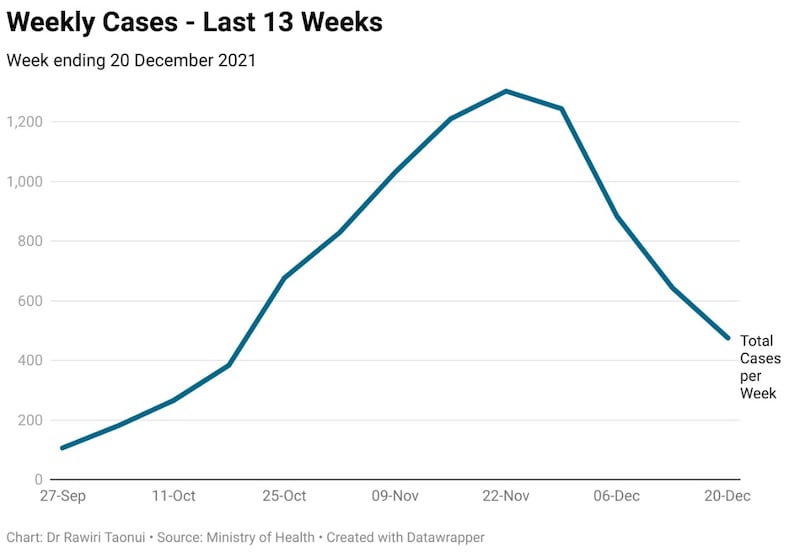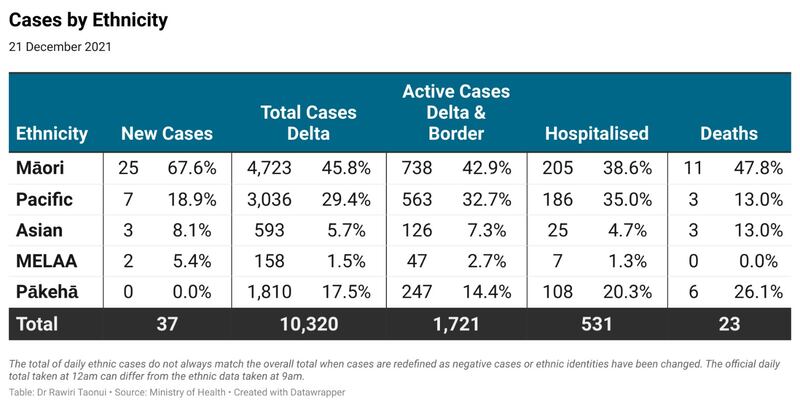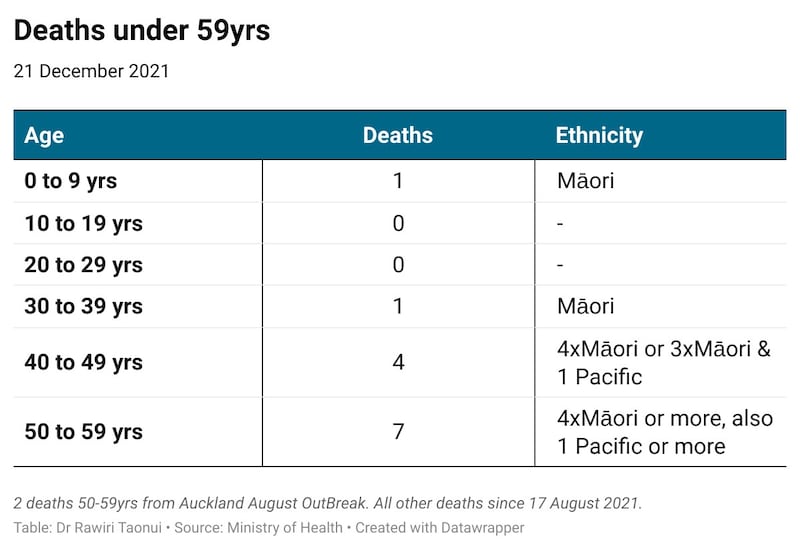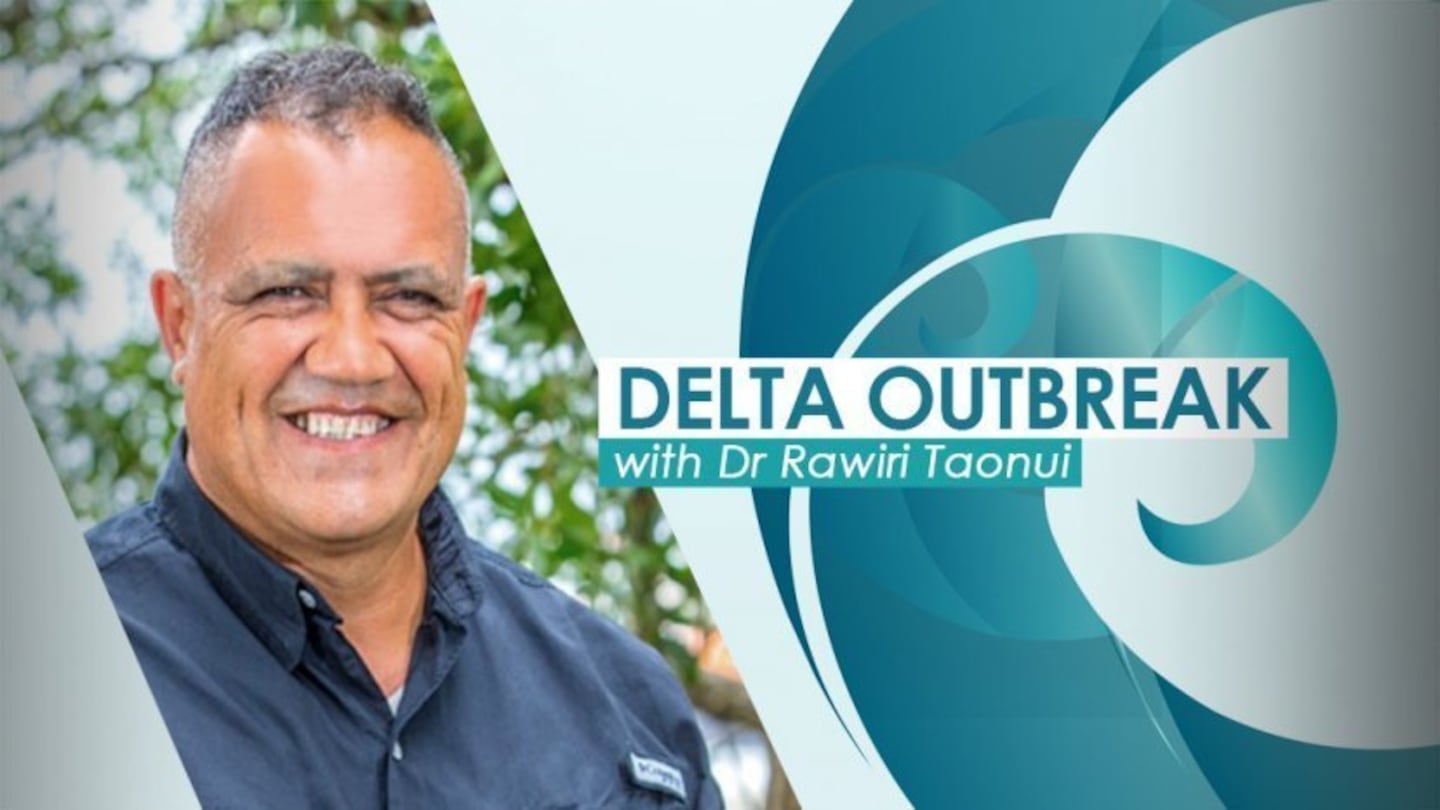Māori and Pacific peoples continue to pay the highest price in a pandemic managed by Pākehā and driven by mainly European cases entering our borders.
There were 28 new cases of Delta in the community on Tuesday. This is the lowest daily number since 5 October.
The new cases are in the Auckland (3), Waitematā, Manukau (14), Bay of Plenty (5) and Taranaki (2) Distict Health Boards. The Ministry of Health figures aggregate the first three figures into “Auckland.” This obscures that 50% of cases in Auckland are in the Māori-Pacific vulnerable Counties-Manukau DHB.

There were five new border cases on Tuesday. The total number of Omicron cases to arrive in Aotearoa since December 10 is 22.
Declining cases
The number of new weekly cases in the community has fallen for the fourth consecutive week to Monday, December 20.
This is positive news with concerns that the opening of the Auckland border last week and the arrival of the Omicron variant 10 days ago separately and together threaten a large surge in cases.

Māori Cases
The Ministry of Health daily data which covers the period between 12am and 12am differs from the ethnic data which covers the period 9am to 9am. On the 9am data, Māori are 67.6% of the new cases added to ethnic figures yesterday.

Māori have been the highest number of cases on 77 of the last 79 days. Māori are the highest on all the key measures of Covid’s impact on the community, including 42.9% of all active cases and 38.6% of all hospitalisations, including 134 or 49.4% of 271 new hospitalisations since 1 November.
Māori and Pacific cases
Māori and Pacific peoples continue to pay the highest price in a pandemic managed by Pākehā and driven by mainly European cases entering our borders.
Māori and Pacific were a staggering 86.5% of new cases added to the national total yesterday. Māori and Pacific are 75.2% of all cases in the current outbreak, 75.6% of active cases, 73.6% of hospitalisations and 60.9% of deaths.

Increasing and younger Māori deaths
Māori deaths are difficult to track. The Ministry of Health announces most deaths in daily Covid-19 updates, usually including age, location and gender. The ministry does not announce the ethnicity of deaths ostensibly to protect the privacy and the wishes of families.
While one can understand that consideration, it is less easy to comprehend why the announcement of Māori deaths sometimes differs. On occasion, there has been no announcement or only partial information excluding age.
It is possible to track deaths but this requires constant collation of age and ethnic data because upon each new daily update the ministry deletes data from the previous day.
My review shows there have been 49 deaths since Covid-19 first arrived in New Zealand. Seven deaths have been in the 50-59yrs age group, four in the 40-49yr age group, one in their 30s and one aged under ten.
There were five Māori deaths before the Delta Outbreak. Two of them were Māori brothers in their 50s from Tokoroa who died during last year’s August Auckland outbreak. As far as I have been able to discern, they were the youngest deaths during Covid-19 last year. There may have been one other death in the 50yrs age group. This, I am unable to clarify.
There have been 23 deaths during the current outbreak, of which 11 or 42.9% have been Māori. The first 12 deaths occurred between September 4 and November 19. Five of these deaths were Māori. One was a Māori man in his 40s who died alone while self-isolating at home on November 3 in the Counties-Manukau DHB area. At that time, this was the youngest death since Covid-19 had arrived in New Zealand. A second death on November 5 was a Māori man in his 50s who also died alone in home isolation. A Pacific person in their 50s also died on October 6,
Since November 20, there have been a further 11 deaths of which six or 54.5% have been Māori. One was in their 50s. Three were in their 40s, with the caveat that one may have been a Pacific person.
A Māori who died on December 9 was in their 30s. At that time, they were the youngest death since Covid-19 arrived in New Zealand.
Late last week, it emerged that a nine-year-old Māori boy died of Covid-19. There was no mention in the daily Covid-19 update. We now know that having become ill, he was admitted to a hospital and died before testing positive for Covid-19.

In summary, Māori are the youngest deaths being the only deaths under nine-years-old, the only death under 39yrs, either three or all four under 50yrs deaths, and at least four of the deaths under 59yrs.
Despite four weeks of declining cases, the increasing number of younger Māori deaths is a major concern. The obfuscation of this data and absence of expressed concern about this in daily Covid-19 briefings tells us that the ministry and government Covid-19 response for Māori is inadequate, defensive and oversensitive to criticism.
The main strategy has been to reject prioritising Māori based on vulnerability and need because that might offend Pākehā voters, and provide catchup funding later. The funding has been frequent and often robust. However as the emerging scale of younger Māori deaths demonstrates, post-facto funding rarely compensates for poor strategy in a crisis.
With the opening of the Auckland border and the recent arrival of the Omicron variant, a surge in cases is likely between Christmas Day and New Year’s Day. Māori need to maintain vigilance, increase vaccination and plan to protect lives.
Heoi anō, e poroporoaki ki a rātou kua mate i te urutā. Ko tātou nei, ka mihia, kia haumaru te noho. Stay safe.
Dr Rawiri Taonui



